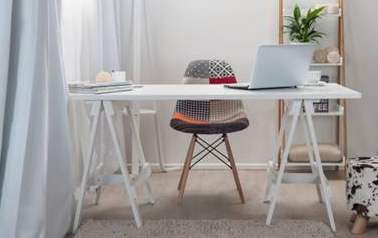Aesthetic Office Furniture: Balancing Style and Functionality
Office furniture plays a pivotal role in creating a conducive work environment that promotes productivity, creativity, and employee well-being. Striking the right balance between style and functionality is crucial for businesses aiming to foster a positive and efficient workspace.

In this blog post, we will delve into the significance of aesthetic office furniture and explore strategies for achieving the delicate equilibrium between style and functionality.
The Impact of Aesthetic Office Furniture
Aesthetics in the workplace go beyond mere visual appeal; they influence employee morale, job satisfaction, and even performance. Well-designed and aesthetically pleasing office furniture can enhance the overall ambiance of the workspace, creating an environment that employees look forward to working in. This, in turn, contributes to increased productivity and a positive company culture.
Moreover, the aesthetic appeal of office furniture extends to the impression it leaves on clients, partners, and visitors. A thoughtfully designed office space communicates professionalism, attention to detail, and a commitment to creating an inspiring work environment. It can be a powerful tool for reinforcing brand identity and making a lasting impression.
Functionality as a Priority
While aesthetics are undoubtedly important, functionality should not be sacrificed in the pursuit of a visually appealing office. The best office furniture seamlessly combines style and practicality, providing employees with the tools and comfort they need to perform at their best. Functionality encompasses factors such as ergonomic design, adaptability, and the ability to facilitate collaboration.
Ergonomics, in particular, is a critical aspect of functional office furniture. Comfortable and supportive chairs, adjustable desks, and ergonomic accessories contribute to the well-being of employees by minimizing the risk of musculoskeletal issues and improving overall comfort. A workspace that prioritizes functionality through ergonomic design promotes health and productivity, ultimately benefiting both employees and the organization.
Choosing Aesthetic Office Furniture
When selecting aesthetic office furniture, it's essential to consider the overall design of the workspace, the nature of the work being done, and the preferences of the employees.
-
Company Branding: Furniture choices should align with the company's brand identity. Consistent use of colors, materials, and design elements can reinforce brand messaging and create a cohesive visual identity.
-
Flexibility and Adaptability: Opt for furniture that can adapt to changing needs. Modular and flexible furniture allows for easy reconfiguration of the workspace as the company grows or as work dynamics evolve.
-
Ergonomics: Prioritize ergonomics to ensure the health and well-being of employees. Invest in ergonomic chairs, sit-stand desks, and accessories that support good posture and reduce the risk of discomfort or injury.
-
Collaborative Spaces: Consider the need for collaborative spaces and choose furniture that facilitates teamwork. This could include communal worktables, comfortable seating arrangements, and creative breakout areas.
-
Technology Integration: In the modern workplace, technology is integral to daily operations. Select furniture that accommodates and integrates technology seamlessly, with features like built-in charging stations, cable management, and connectivity options.
-
Sustainability: A growing concern for businesses is environmental sustainability. Choose furniture made from sustainable materials and consider products with certifications such as LEED or Cradle to Cradle.
Strategies for Balancing Style and Functionality
Achieving the delicate balance between style and functionality requires a thoughtful approach to office design and furniture selection.
-
Create a Design Concept: Develop a clear design concept that aligns with the company's values and culture. This concept can guide furniture choices and ensure a cohesive and intentional design.
-
Prioritize Employee Input: Involve employees in the decision-making process by seeking their input on furniture preferences and comfort requirements. This not only enhances employee satisfaction but also ensures that the furniture meets the practical needs of those who will be using it daily.
-
Mix and Match Styles: Blend different styles to create a unique and personalized aesthetic. Combining modern and traditional elements, for example, can result in a visually interesting and dynamic workspace.
-
Invest in Statement Pieces: Incorporate statement pieces that stand out visually while maintaining functionality. These could be unique desks, chairs, or collaborative furniture that adds personality to the workspace.
-
Balance Open Spaces with Private Areas: Strike a balance between open, collaborative spaces and private, focused work areas. This caters to different work styles and ensures that the office layout accommodates various tasks and preferences.
-
Adapt to Changing Needs: Design the workspace with flexibility in mind. As the needs of the organization evolve, the furniture should be adaptable to accommodate these changes without a complete overhaul of the office layout.
Conclusion
Aesthetic office furniture goes beyond surface-level aesthetics; it plays a crucial role in shaping the work environment, influencing employee well-being, and contributing to overall productivity. Balancing style and functionality requires a strategic approach that considers the unique needs and preferences of the organization and its employees. By prioritizing both visual appeal and practicality, businesses can create workspaces that are not only aesthetically pleasing but also conducive to success in the modern, dynamic world of work.
- 23.11.2023
-
Category:
- Auditorium & Public Setting Blog